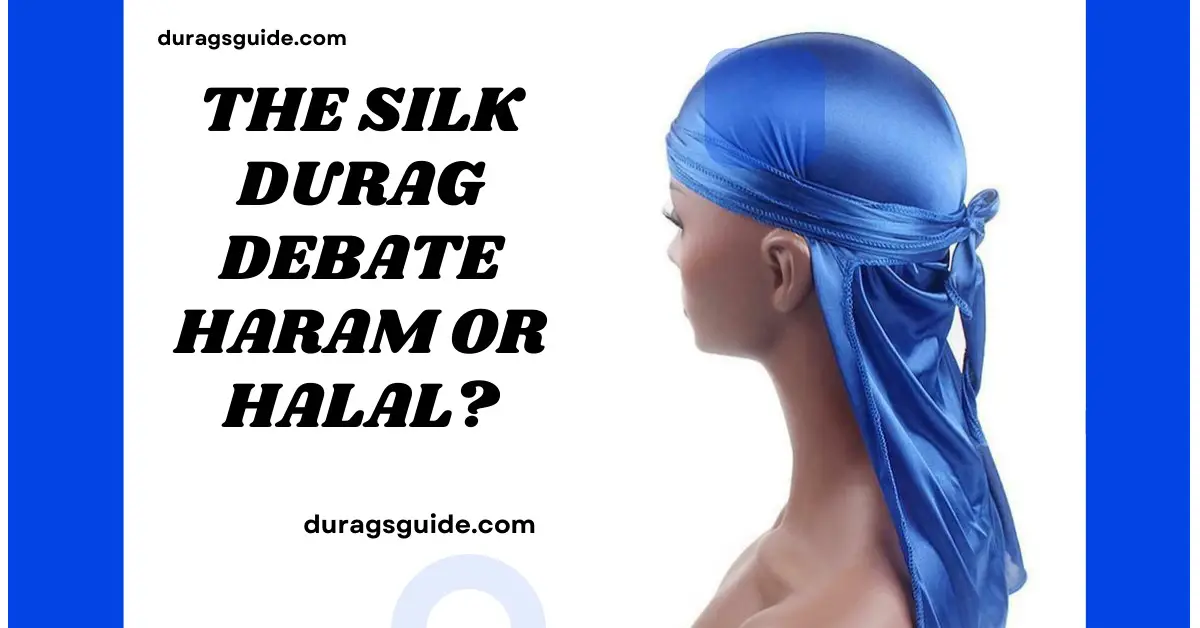Introduction
Silk durags have become a symbol of style and cultural identity for many, but within the Islamic community, questions arise about their permissibility. In this article, we delve into the debate surrounding silk durags from both religious and cultural perspectives. By exploring diverse viewpoints and historical contexts, we aim to provide clarity on whether silk durags are deemed haram or halal in Islam, offering insight into a topic that resonates deeply within the Muslim community.
Here you will learn about The Silk Durag Debate: Haram or Halal?
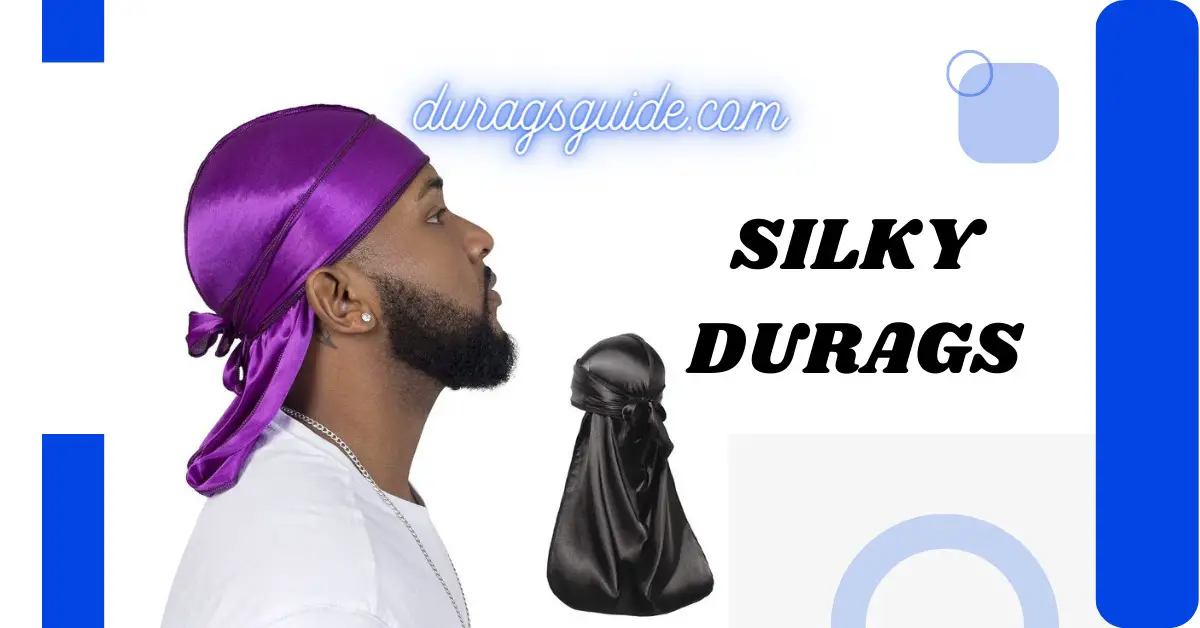
Understanding Islamic Perspectives
Islamic perspectives on silk durags stem from interpretations of religious texts and teachings. Here’s a breakdown of key considerations:
- Quranic References: The Quran mentions silk as a luxurious fabric enjoyed by inhabitants of Paradise (Surah Al-Insan, 76:12), but it does not explicitly forbid its use in clothing.
- Hadith Traditions: Hadith literature contains various narrations regarding the use of silk for men’s clothing. While some Hadiths suggest a prohibition on men wearing silk garments, others indicate exceptions for certain circumstances.
- Scholarly Interpretations: Islamic scholars have offered diverse interpretations regarding the permissibility of silk clothing for men. Some adhere strictly to Hadiths prohibiting silk attire, while others advocate for contextual understanding and flexibility in interpretation.
- Cultural Norms and Practices: Cultural norms also influence perspectives on silk durags within the Muslim community. In some regions, wearing silk is considered a symbol of wealth and status, while in others, it may carry religious significance.
- Practical Considerations: Beyond religious rulings, practical considerations such as the source and quality of silk, as well as the intention behind wearing silk clothing, play a role in determining its permissibility in Islam.
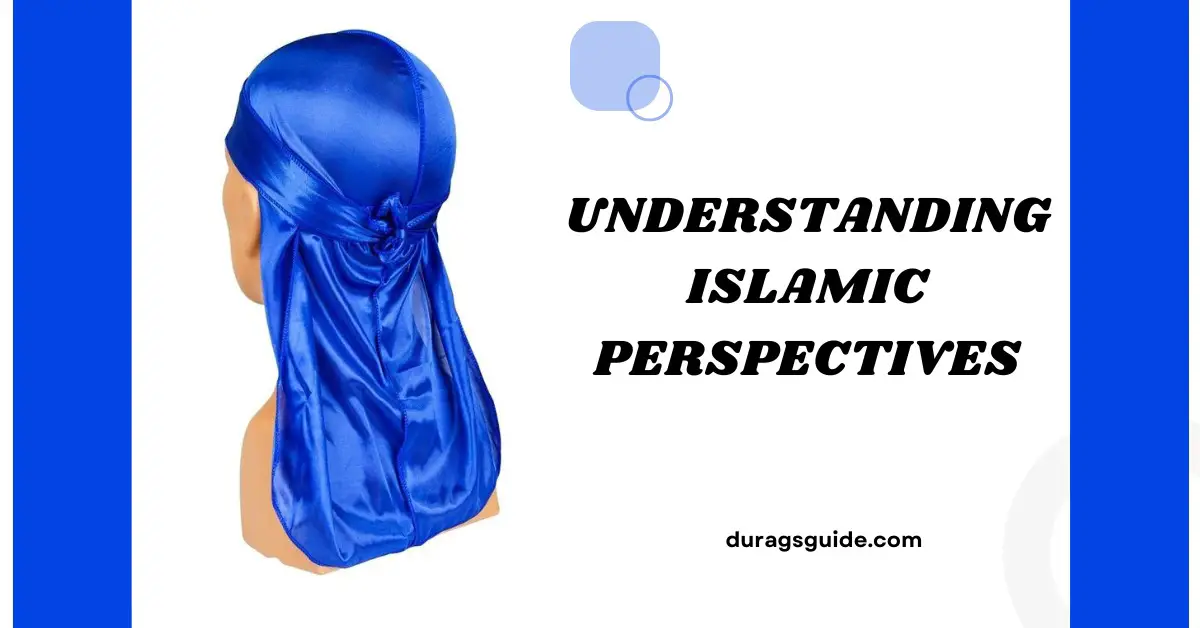
Cultural Significance of Durags
Durags hold significant cultural importance, particularly within the African American community. Here’s an exploration of their cultural significance:
- Historical Roots: Durags have roots in African and African American culture, dating back to the early 19th century. Originally worn by slaves to maintain their hairstyles and protect their hair from harsh conditions, durags became emblematic of resilience and identity.
- Hair Care Practices: Durags are integral to hair care routines, especially for individuals with textured or curly hair. They help to preserve hairstyles, prevent frizz, and promote hair health by keeping hair moisturized and protected.
- Fashion and Style: Over time, durags evolved from a practical necessity to a fashion statement. They are now embraced as stylish accessories, often worn as headwear or incorporated into outfits to express individuality and cultural pride.
- Symbol of Identity: For many African Americans, durags symbolize cultural heritage, solidarity, and resistance against societal pressures. They serve as a visual representation of black identity and resilience in the face of adversity.
- Community Connection: Durags foster a sense of community and belonging among African Americans. They are often exchanged as gifts, worn during communal events such as barbershop gatherings or cultural celebrations, and serve as a unifying symbol within the community.
- Pop Culture Influence: Durags have gained popularity beyond the African American community, influencing mainstream fashion and music culture. They are frequently featured in music videos, films, and fashion campaigns, contributing to their widespread recognition and acceptance.
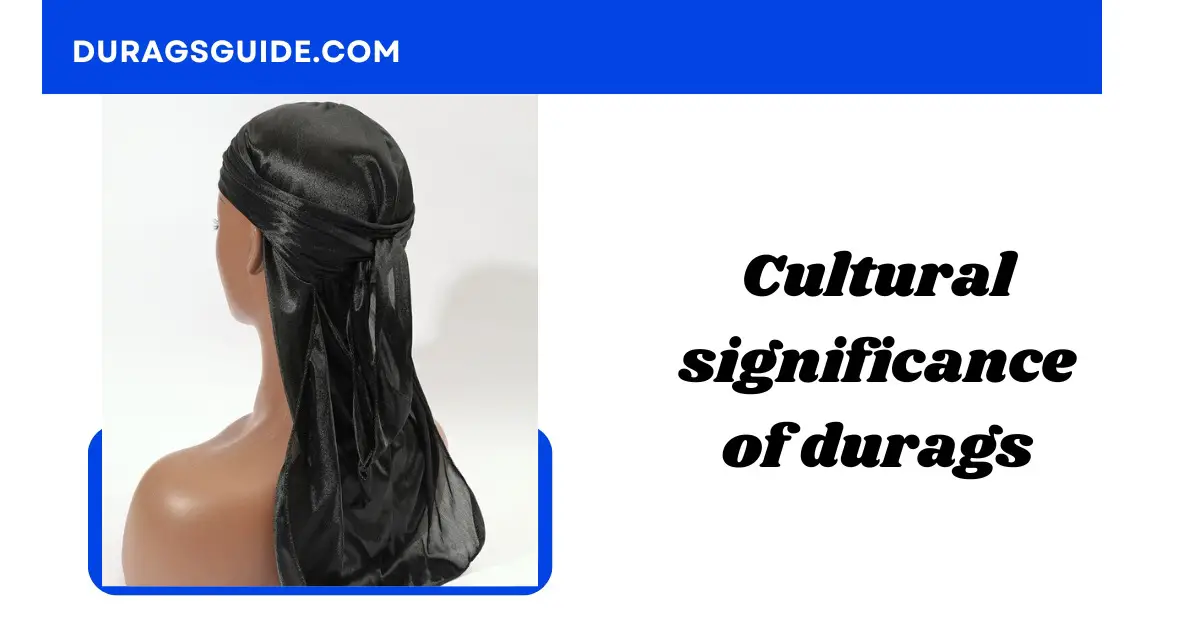
Analysis of Silk Material in Islamic Law
Analyzing the permissibility of silk durags in Islamic law requires a nuanced understanding of religious texts, scholarly interpretations, and cultural contexts. Here’s a closer look at the key considerations:
- Textual References: Islamic teachings contain references to silk, both in the Quran and Hadith literature. While the Quran mentions silk as a luxurious fabric in Paradise (Surah Al-Insan, 76:12), Hadiths offer guidance on its usage in clothing.
- Prohibitions on Men’s Silk Clothing: Several Hadiths narrated by the Prophet Muhammad indicate a prohibition on men wearing silk garments. These narrations are found in collections such as Sahih Bukhari and Sahih Muslim, highlighting the importance of avoiding silk attire for men.
- Exceptions and Contextual Understanding: Despite the general prohibition, scholars acknowledge exceptions to the rule based on specific circumstances. For example, silk may be permissible for men in situations where it serves a medical necessity or is worn in non-arrogant or non-extravagant manner.
- Scholarly Opinions: Islamic scholars offer diverse opinions on the permissibility of silk clothing for men. Some scholars adopt a strict interpretation of Hadiths, advocating for the prohibition of silk attire under all circumstances. Others adopt a more nuanced approach, considering factors such as cultural norms, intention, and practicality.
- Cultural Practices and Norms: Cultural practices and norms also influence the perception of silk durags within the Muslim community. In regions where wearing silk is common and culturally accepted, attitudes toward silk clothing may differ from those in regions where it is less prevalent.
- Personal Conscience and Interpretation: Ultimately, the permissibility of silk durags in Islam may vary based on individual conscience and interpretation of religious teachings. Muslims are encouraged to seek knowledge, consult with scholars, and make informed decisions that align with their understanding of Islamic principles.
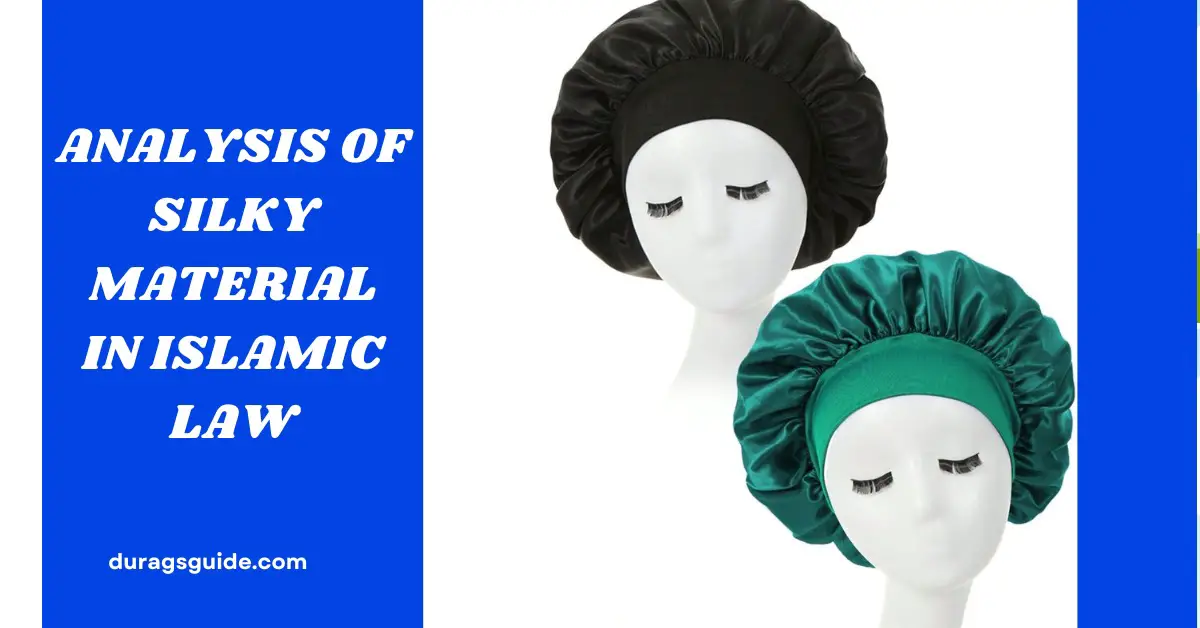
Debating Permissibility: Arguments For and Against
The debate surrounding the permissibility of silk durags in Islam elicits various arguments from proponents and opponents. Here are the key arguments for and against their usage:
Arguments For Silk Durags:
- Cultural Significance: Advocates argue that silk durags hold cultural significance beyond religious considerations. They serve as symbols of style, identity, and solidarity within the African American community, fostering a sense of pride and belonging.
- Personal Choice: Supporters assert that wearing silk durags is a matter of personal choice and individual expression. As long as the intention is not to flaunt wealth or arrogance, wearing silk durags should be permissible within Islamic guidelines.
- Adaptation to Modernity: Some argue that Islamic teachings should adapt to modern realities and societal norms. In contemporary contexts where silk clothing is commonly worn and socially accepted, the prohibition on silk attire for men may be perceived as outdated or impractical.
Arguments Against Silk Durags:
- Prohibitions in Hadith: Opponents cite Hadiths prohibiting men from wearing silk garments as evidence of the impermissibility of silk durags in Islam. They argue that adhering to these Hadiths is essential for upholding religious integrity and obedience to prophetic traditions.
- Risk of Arrogance: Critics express concerns that wearing silk durags may lead to arrogance or ostentation, especially if worn as a status symbol or fashion statement. Silk’s association with luxury and wealth could potentially detract from the humility and modesty encouraged in Islam.
- Respect for Tradition: Some argue for the preservation of traditional Islamic teachings and practices, including prohibitions on certain types of clothing. Upholding these traditions maintains continuity with the past and reinforces the importance of adherence to religious principles.
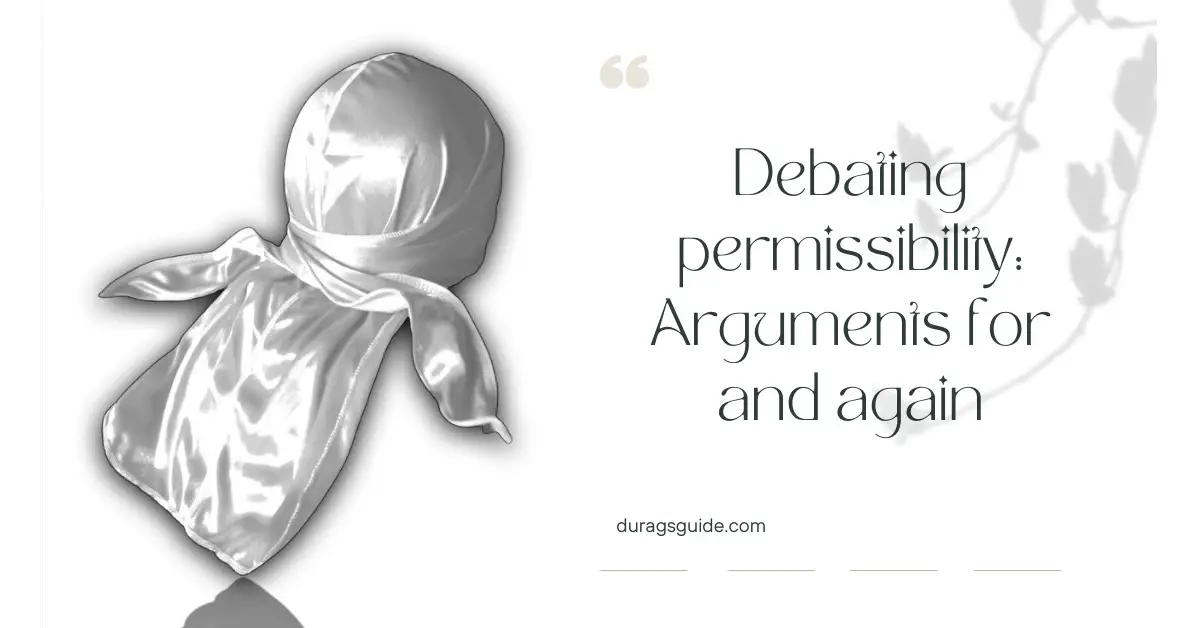
Historical Context of Silk Usage
Understanding the historical context of silk usage provides insight into its significance within Islamic culture and jurisprudence. Here’s an exploration of the historical background:
- Origins of Silk: Silk production originated in ancient China around 2700 BCE and gradually spread along trade routes to other regions, including the Islamic world. The luxurious fabric became highly prized for its softness, sheen, and durability.
- Silk in Islamic Civilization: Silk played a significant role in Islamic civilization, serving as a symbol of luxury, status, and refinement. It was used for clothing, furnishings, and decorative arts, reflecting the opulence of Islamic courts and aristocracy.
- Trade and Exchange: Silk trade routes facilitated cultural exchange and commerce between the Islamic world and distant regions. Silk textiles were traded along the Silk Road, connecting Asia, the Middle East, and Europe, contributing to the diffusion of knowledge, technology, and artistic styles.
- Islamic Legal Discourse: Islamic jurists grappled with questions related to silk usage, drawing on Quranic principles and prophetic traditions to establish guidelines for permissible attire. While silk was prized for its quality, its association with luxury raised ethical and religious considerations.
- Societal Norms and Practices: Silk attire was commonly worn by elites and rulers in Islamic societies, reflecting social hierarchies and cultural values. Its use in clothing was often regulated by sumptuary laws, which prescribed appropriate attire based on social status and religious considerations.
- Evolution of Silk Durags: Over time, silk durags emerged as a modern iteration of traditional headwear, blending cultural heritage with contemporary fashion trends. Their popularity among diverse communities reflects the enduring appeal of silk and its association with elegance and sophistication.
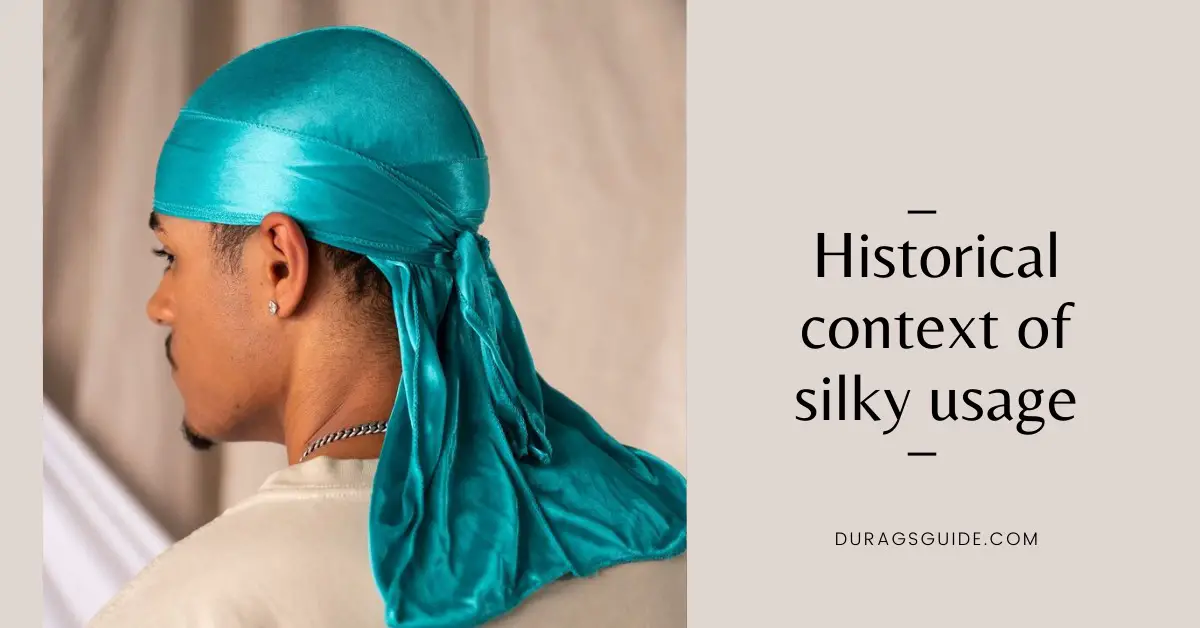
Modern Interpretations and Practices
In contemporary times, the debate over the permissibility of silk durags continues to evolve, influenced by shifting social norms, cultural practices, and individual interpretations of Islamic teachings. Here’s an exploration of modern interpretations and practices:
- Diverse Perspectives: Muslim scholars and communities hold diverse perspectives on the permissibility of silk durags, reflecting varying interpretations of religious texts and traditions. Some advocate for a strict adherence to Hadiths prohibiting silk attire for men, while others adopt more flexible interpretations based on contextual considerations.
- Cultural Adaptation: In multicultural societies, Muslims navigate cultural diversity and adapt religious practices to their social contexts. Silk durags may be worn as expressions of cultural identity and personal style, reflecting the fusion of tradition and modernity.
- Personal Choice and Intentions: Individuals may weigh personal considerations and intentions when deciding whether to wear silk durags. Factors such as intention, modesty, and humility play a role in determining the permissibility of silk attire within Islamic guidelines.
- Community Practices: Community norms and practices also influence attitudes toward silk durags. In some communities, wearing silk may be socially accepted and culturally ingrained, while in others, it may be viewed with caution or disapproval.
- Educational Resources: Access to educational resources and guidance from knowledgeable scholars can help individuals navigate complex religious rulings and make informed decisions regarding silk durags. Seeking advice from qualified religious authorities can provide clarity and guidance on matters of religious observance.
- Dialogue and Discourse: Open dialogue and discourse within the Muslim community foster understanding and respect for diverse perspectives on silk durags. Engaging in respectful conversations allows individuals to explore nuanced interpretations and reconcile differing viewpoints.
- Personal Conviction: Ultimately, individuals are encouraged to follow their personal convictions and adhere to religious principles in matters of attire and conduct. Making conscientious choices that align with one’s understanding of Islamic teachings reflects a commitment to faith and integrity.
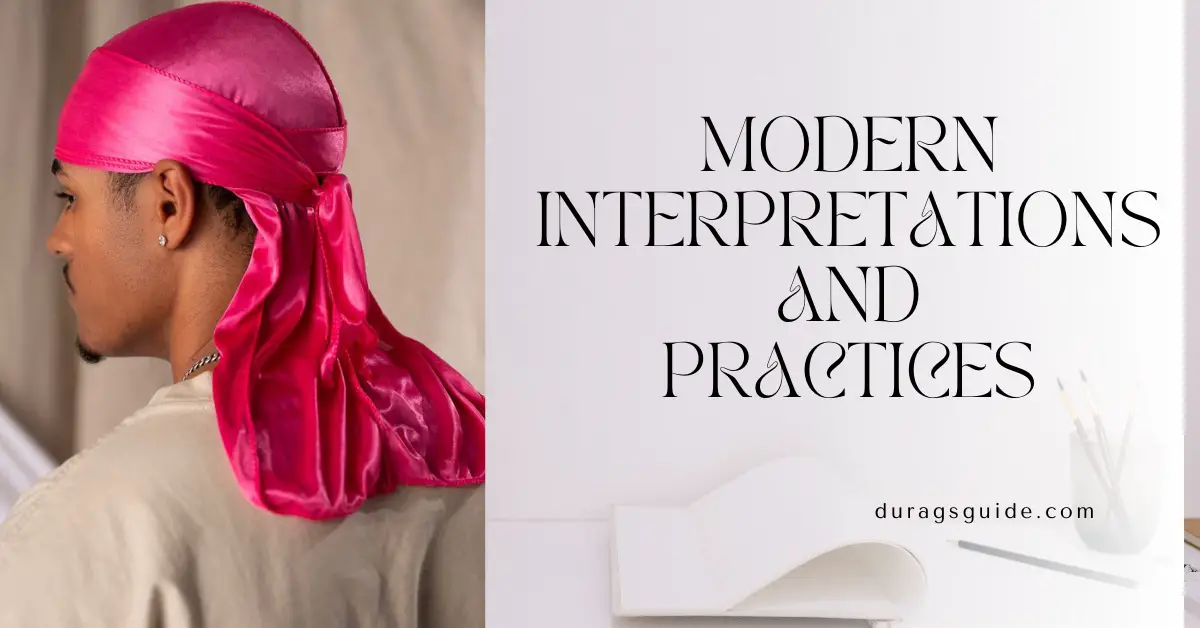
Personal Testimonies and Experiences
Personal testimonies and experiences provide valuable insights into the nuanced perspectives surrounding the silk durag debate within the Muslim community. Here, we explore the diverse voices and lived experiences of individuals:
- Cultural Identity: Some individuals view silk durags as a symbol of cultural identity and pride, representing their connection to African American heritage and traditions. For them, wearing silk durags is a way to celebrate cultural heritage and express individuality.
- Religious Convictions: Others approach the silk durag debate from a strictly religious standpoint, adhering to Hadiths that prohibit men from wearing silk garments. Their decision to abstain from silk durags is driven by religious conviction and a desire to uphold Islamic principles.
- Personal Choice and Interpretation: Many individuals navigate the silk durag debate through a lens of personal choice and interpretation. They weigh religious teachings, cultural norms, and personal preferences when deciding whether to wear silk durags, striving to find a balance between tradition and modernity.
- Community Acceptance: Community acceptance and norms play a significant role in shaping individuals’ attitudes toward silk durags. In communities where wearing silk is common and culturally accepted, individuals may feel more comfortable embracing silk durags as a fashion accessory.
- Spiritual Reflection: Some individuals engage in spiritual reflection and introspection to reconcile conflicting viewpoints on silk durags. They seek guidance from religious authorities, engage in prayer and contemplation, and consult religious texts to inform their decision-making process.
- Social Justice and Advocacy: For activists and advocates, the silk durag debate intersects with broader discussions on social justice and equality. They advocate for inclusive interpretations of religious teachings and challenge stereotypes and stigmas associated with cultural practices such as wearing silk durags.
- Personal Growth and Evolution: Over time, individuals may experience personal growth and evolution in their perspectives on silk durags. Life experiences, education, and exposure to diverse viewpoints may influence their understanding and approach to this contentious issue.

Recommendations for Muslim Consumers
Navigating the silk durag debate requires careful consideration of religious principles, cultural norms, and personal convictions. Here are some recommendations for Muslim consumers grappling with this issue:
- Seek Knowledge: Educate yourself about the Islamic teachings and scholarly interpretations regarding the permissibility of silk attire for men. Consult reliable sources, knowledgeable scholars, and reputable religious texts to gain a deeper understanding of the topic.
- Reflect on Intention: Consider your intentions and motivations behind wearing silk durags. Ensure that your choice aligns with Islamic principles of modesty, humility, and sincerity, rather than seeking to flaunt wealth or status.
- Respect Diverse Perspectives: Recognize that opinions on silk durags may vary among individuals and communities. Respect diverse viewpoints and engage in constructive dialogue with others, even if you disagree with their stance.
- Consider Context: Take into account the cultural context and societal norms surrounding silk durags in your community. While religious principles guide decision-making, cultural considerations may also influence personal choices.
- Consult Religious Authorities: If you have questions or uncertainties regarding the permissibility of silk durags, seek guidance from qualified religious authorities. They can provide clarity and guidance based on Islamic teachings and jurisprudence.
- Exercise Moderation: Practice moderation and balance in your approach to silk durags. If wearing silk raises concerns about arrogance or extravagance, consider alternative materials or styles that align better with Islamic values.
- Make Informed Choices: Make informed decisions about silk durags based on your personal convictions, knowledge, and understanding of Islamic teachings. Take into account both religious rulings and practical considerations when determining the permissibility of silk attire.
- Engage in Spiritual Reflection: Engage in spiritual reflection and introspection to deepen your understanding of religious teachings and their application to contemporary issues. Strive to align your actions with the principles of faith, humility, and sincerity.
- Promote Unity and Understanding: Foster unity and understanding within the Muslim community by engaging in respectful dialogue and mutual support. Embrace diversity of opinion and work towards common goals of faith, compassion, and social justice.
By following these recommendations, Muslim consumers can navigate the silk durag debate with integrity, conscientiousness, and respect for religious principles and cultural diversity within the Muslim community.
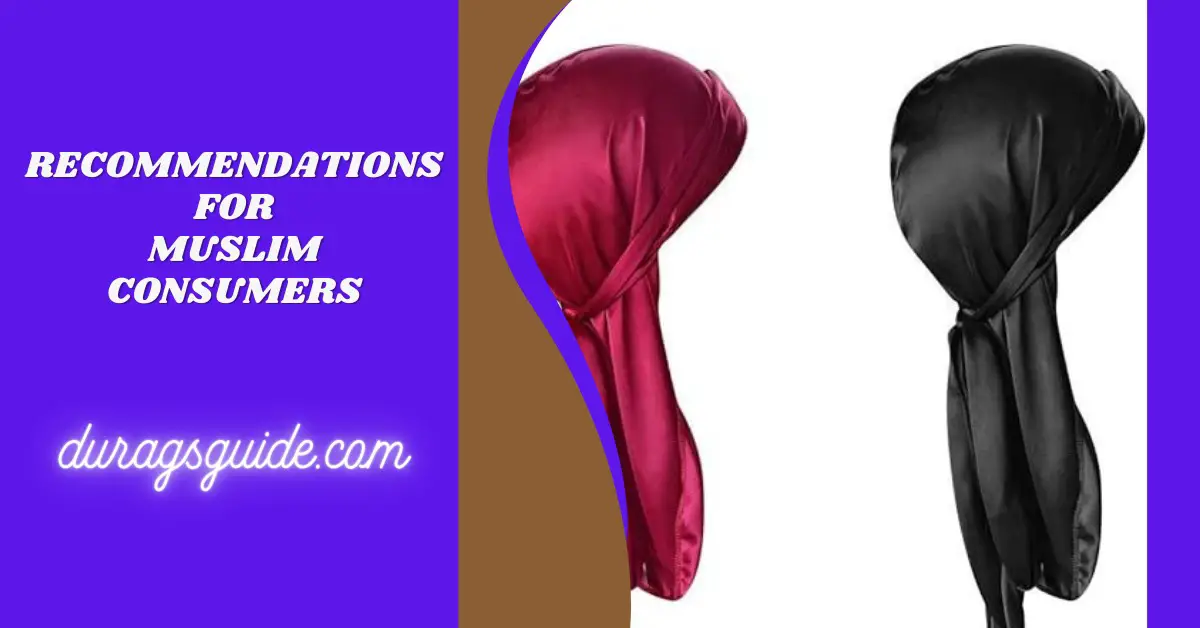
Table about The Silk Durag Debate: Haram or Halal?
| Aspect | Haram (Prohibited) | Halal (Permissible) |
| Religious Texts | Prohibitions in Hadith literature regarding men wearing silk garments. | Interpretations allowing silk under certain circumstances, such as medical necessity or non-arrogant wear. |
| Cultural Significance | Cultural symbolism and pride within the African American community. | Expression of personal style and identity, respecting cultural diversity. |
| Personal Choice | Considered against religious teachings on humility and modesty. | Based on individual intentions and adherence to Islamic principles. |
| Community Acceptance | Views silk as culturally ingrained or a symbol of status. | Embraces diversity and respects individual choices within Islamic guidelines. |
| Scholarly Interpretation | Some scholars advocate strict adherence to Hadiths. | Others allow flexibility based on contextual understanding and societal norms. |
| Fashion and Style | May be perceived as ostentatious or extravagant. | Can be worn modestly and tastefully as part of one’s attire. |
| Historical Context | Reflects a legacy of silk’s luxury and status. | Considers societal evolution and changing norms over time. |
| Spiritual Reflection | Encourages humility and self-awareness. | Encourages sincerity and intentionality in one’s actions. |
| Social Justice | Raises awareness of inequalities and social stigma. | Advocates for inclusivity and understanding within diverse communities. |
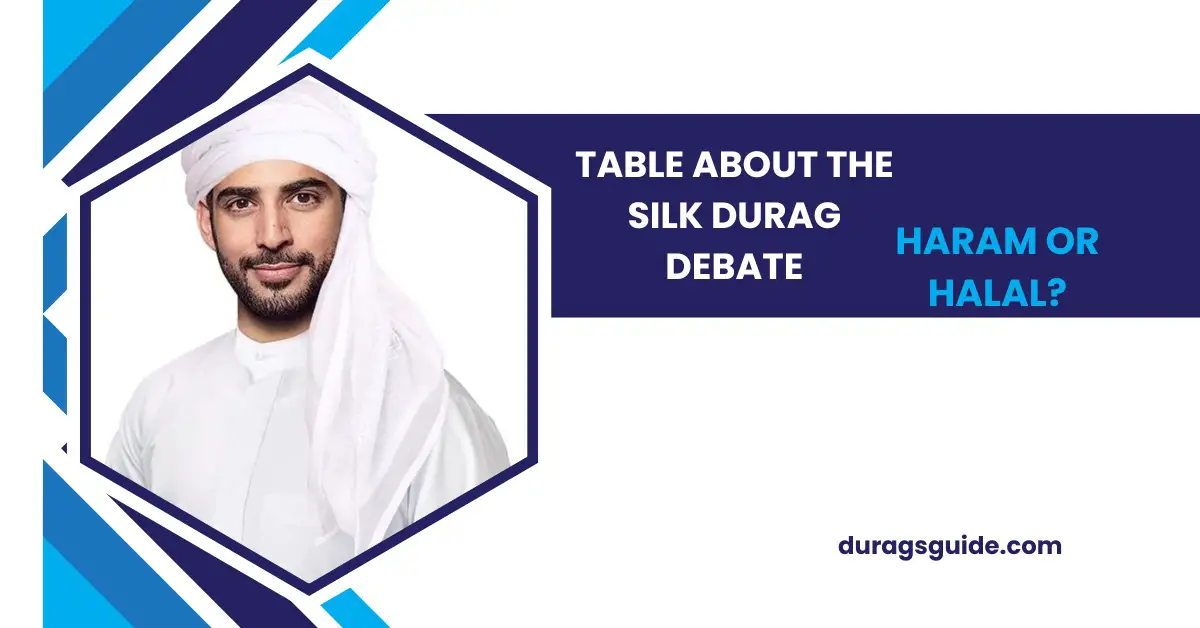
Online and offline stores for purchasing silky durags
- Offline Stores:
- Beauty Supply Stores: Many beauty supply stores carry a variety of durags, including silky ones. You can visit stores like Sally Beauty or local beauty supply shops in your area.
- Streetwear Boutiques: Some streetwear boutiques may stock durags, including silky ones, as part of their accessory collections.
- Clothing Stores: Larger clothing retailers may also have durags available, especially in their men’s accessory sections.
- Online Retailers:
- Amazon: Silky Durags on Amazon
- Etsy: Silky Durags on Etsy
- eBay: Silky Durags on eBay
- Official Durag Brands Websites: Many durag brands have their own websites where you can purchase directly from them. Examples include:
These options provide a range of choices for purchasing silky durags, allowing you to explore both offline and online avenues based on your preferences and convenience

Conclusion
In conclusion, the silk durag debate encapsulates the dynamic interplay between religious principles, cultural practices, and personal convictions within the Muslim community. As individuals grapple with questions of permissibility, they navigate a complex landscape shaped by diverse perspectives, historical legacies, and contemporary realities. While the debate may elicit differing opinions and interpretations, it ultimately underscores the richness and complexity of Islamic tradition and the ongoing dialogue within the Muslim community. By engaging in respectful discourse, seeking knowledge, and reflecting on personal intentions, Muslim consumers can navigate the silk durag debate with integrity, humility, and a commitment to faith. Embracing diversity of thought and promoting unity within the community fosters mutual understanding and solidarity, enriching the fabric of Islamic life in the modern world.

FAQS
rank_math_rich_snippet id=”s-992abb3d-d0ec-468c-95eb-cb7c4f1a12e1″]
